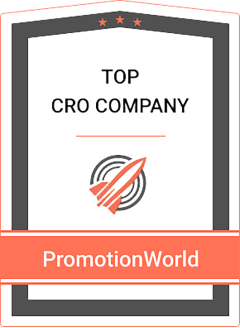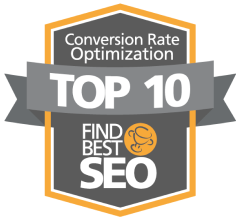Key takeaway: Marketing should be a higher percentage of revenue early in the life of the technology offering, dropping to a steady state as the adoption occurs, and the offering matures.
We have written here about the relationship between investments in branding and lead generation and how both are important to the success of any for-profit enterprise. Here, we look at the question of the optimum marketing mix vs. the firm’s revenue over time – the dynamics of the marketing investment. The market investment as a percent of revenue is dynamic, varying over the firm’s life, but the profile of that curve depends largely on two key factors, which we’ll discuss.
Key Terms
Let’s first define a couple of terms for clarity. When we say “marketing,” we mean every function involved in building from the company’s brand to capturing Marketing Qualified Leads (MQLs). This work will include, for instance, maintaining the company’s website, designing product/service collateral, managing events, launching and tracking ad and email campaigns, producing promotional videos, maintaining drip campaigns, targeted gifting, and other initiatives. (In B2B instances, Advertas practices Account-Based Marketing, but more on that at another time.) Some companies may refer to this collection of tasks as “marketing communications” or “Marcom,” but we think that moniker is too limiting.
In contrast to marketing, “sales,” “field sales,” or “business development” is everything from the point of an MQL to a closed/won transaction that results in added revenue to the business. Not to minimize the selling process, it is critical to the enterprise’s success and takes specific skills by talented professionals. However, our focus is on the dynamics of the marketing/revenue relationship over time as the business matures.
The Interaction of Technology Marketing and Investments
While virtually all companies have marketing and sales-related functions, we’ll look at B2B tech companies, where Advertas applies most of our creative energies on behalf of clients. Figure 1 is the now-familiar technology adoption curve, which presents an excellent summary of the buying personas the tech firm will likely experience over time.
Figure 1: The familiar Technology Adoption Life Cycle augmented and widely seen in Geoffrey A. Moore’s Crossing the Chasm (1995). Everett Rogers’ Diffusion of Innovations (2003) amplified the idea of 100% market saturation as adoption progresses. The area under the curve represents the portion of the market adopting the offering.
In Figure 2, Gartner conveys how buyer expectations change over time with new technology, predicting a “Peak of Inflated Expectations” and “Trough of Disillusionment” that many of us have experienced. Both of these graphs show steady-state conditions over the life of the technology offering. But what about the dynamic aspects of the marketing investment over time?
Figure 2: Gartner Hype Cycle is a well-known and effective concept addressing how new technologies go through the adoption process from innovation to acceptance by a large market segment.
We suggest a new curve that compares the marketing/revenue ratio as a technology product matures. At the launch of a new technology offering – product or service – consider how the offering is being marketed and what is required for its adoption by customers. Early in the lifecycle, the new entrant must show clear, discernible value – perceived or measurable – over competitors. Competitors may be incumbent products and services, or substitutionary. In the latter case, the new entrant will effectively replace or augment what customers are using currently. The value-add of the offering does not have to be quantitative, but it certainly helps. Value may be perceived or measurable, but it must be sufficiently dramatic to gain the mindshare of prospective customers to change what they are doing or using currently – enough to “move the needle.” In his book Zero to One (2014), Peter Thiel, one of the founders of PayPal, writes:
“As a good rule of thumb, proprietary technology must be at least 10 times better than its closest substitute in some important dimension to lead to a real monopolistic advantage. Anything less than an order of magnitude better will probably be perceived as a marginal improvement and will be hard to sell, especially in an already crowded market.”
Over years of marketing technology, we find the guide to be valid. Where a firm has introduced an offering that is only marginally better – less than a 10X value contribution – the product/service has struggled for adoption. It is possible to continue to produce and market offerings of only marginal value contribution, of course, but the firm must spend more on marketing and will see longer sales cycles. That said, if sufficient profit is generated from the offering, it may well be worth the investment and the long-term valuation of the firm. Our point here is not suggesting that products and services with, say, a 5X value enhancement are not worth doing but to be prepared to invest more in marketing early and throughout the life of the product or service relative to revenue to the firm for the offering.
Figure 3 shows what we believe to be the ideal marketing profile, depicting the percentage of revenue invested in marketing over time. (The curve assumes the firm has the financial resources to invest in marketing over time.) The main factors affecting the curve’s profile are the perceived value of the offering and the competitive landscape. The steady-state condition, which corresponds to the Plateau of Productivity in the Gartner Hype Cycle of Figure 2, largely depends on management’s expectation of gaining market share from competitors. At launch, the marketing will be multiples of revenue, but with a strong the value proposition, revenue increases rapidly with respect to marketing. The more a firm must compete for business, the more must be invested in marketing to support sales efforts, especially in the presence of large, well-entrenched competitors. The same is true if the offering is to win market share in a crowded market.
Figure 3: Profile of marketing investment versus revenue over time. The rate at which the curve declines depend on the perceived value of the offering and the competitive landscape, among other factors. The end-state (lower-right) depends on competitive pressures.
Of course, rates of adoption by new entrants depend on the industry, and that, too, must be considered in the marketing and sales mix. Advertas has worked with FinTech firms and companies in the energy industry, for example. Comparing the two industries, the consumer-oriented Fintech industry has shorter sales cycles than the commodities-based energy industry; however, the basic principles set out here still apply. (Why rates of adoption of new technology vary by industry is the subject of a different blog.)
As the new offering enjoys greater adoption and brand recognition, the marketing vs. sales mix shifts more to sales. When the brand is established, it’s also likely that new entrants have entered the market. More must be invested in sales resources, and having a local presence, reps with personal relationships, and product or service costs begin to have more influence on buyers’ decisions. The buying values of technical influencers and executive-level decision-makers are also dynamic, becoming more sophisticated with product or service maturation. The understanding of the technology value proposition grows as does the competitive landscape.
Conclusion
When new technologies are first introduced, the investment in marketing must be high. Early adopters are being educated and cultivated. Industry influencers are recruited. Thought leaders are speaking at industry events and publishing on the application of the technology offering. These initiatives all require marketing support and materials. The marketing investment is high relative to revenue at the point of a relatively new offering, as depicted in Figure 3. As the product or service gains acceptance, customer reference cases and testimonials accrue as awareness spreads on the value of the offering. Where an offering lacks such references by companies that are considered industry thought leaders and individual influencers, the offering will struggle for adoption, so such reference cases are critical to success of the technology product or service.

Hal Green
Director
Hal H. Green is a marketing executive and entrepreneur in the energy industry with more than 20 years of experience in starting and managing technology companies. His particular focus is business strategy, effective selling practices, and field marketing. He has a diverse portfolio of achievements, which span all areas of the hydrocarbon supply chain – from upstream exploration through downstream refining & petrochemical.
Mr. Green attended Texas A&M University, where he received a Bachelors in Electrical Engineering. He later earned an MBA in Information Management from the University of Houston. As Director of Manufacturing Systems for Setpoint, an advanced process control firm in Houston, Mr. Green effectively managed the P&L of this consulting practice. After Aspen Technology acquired Setpoint in January 1996, he continued as Director of Business Development for the Information Management and Polymer Business Units. Throughout his career, Mr. Green has been a proven thought leader, publishing articles in major industry journals.
In 2004, Mr. Green founded Advertas, a full-service marketing and public relations firm serving clients in energy and technology across the energy supply chain – upstream, midstream, downstream and power. In 2009, Geophysical Insights retained Advertas to be their outsourced marketing and business development functions. Dr. Tom Smith, President/CEO of Geophysical Insights, appointed Mr. Green as Director of Marketing and Business Development, in which capacity he still serves today.








